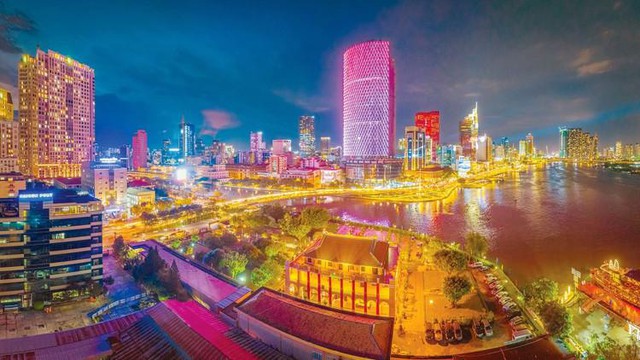Two strategic drivers for Viet Nam to become high-income country by 2045
VGP - Viet Nam can fully materialize its goal of becoming a high-income country by 2045 if the country is committed to pursuing two strategic drivers - institutional reform and green development, according to the World Bank (WB).

Illustration photo
This is a key suggestion of two key reports, namely Viet Nam 2045 Breaking Through Institutions for a High-Income Future, and Viet Nam 2045 Growing Greener - Pathways to A Resilient and Sustainable Future, released by the World Bank in Ha Noi on May 22.
In the first report, the World Bank recommended that Viet Nam strengthen its legal framework and improve the efficiency of public investment to sustain high growth and reach its 2045 high-income target.
To maintain rapid economic growth, they said, Viet Nam must consolidate its legal system and enhance the regulatory environment. Public investment must be managed more effectively, focusing on both scale and quality, from project selection to implementation and monitoring. International experiences show that countries which escape the middle-income trap and transition to high-income status consistently improve the quality of their institutions.
The second report highlights that climate adaptation investment is key to minimizing weather-related risks to Viet Nam's agriculture, businesses, and industrial infrastructure.
A 2024 WB survey finds that 75 percent of businesses in Viet Nam's major export sectors such as garments and electronics are operating in areas frequently exposed to extreme heat, putting 1.3 million workers in vulnerable conditions.
Without timely adaptation measures, climate change could cost Viet Nam up to 12.5 percent of GDP by 2050, compared to baseline scenarios, and this therefore would pose a serious threat to Viet Nam's goal of becoming a high-income country by 2045.
In response to the growing threat of climate change, Viet Nam must act now to safeguard land, communities, and infrastructure from climate-induced shocks.
WB recommended that Viet Nam begin implementing early adaptation measures, underlining the importance of creating supportive mechanisms and policies that encourage both businesses and citizens to actively respond to climate risks. Moreover, climate risk management should be mainstreamed across all sectors of the economy to ensure a resilient and sustainable development trajectory.
According to World Bank calculations, strategic adaptation investments could cut climate-induced GDP losses by nearly half, from 12.5 percent down to 6.7 percent by 2050./.

